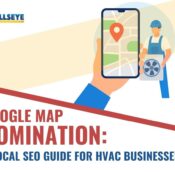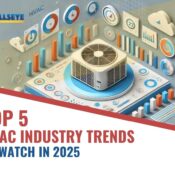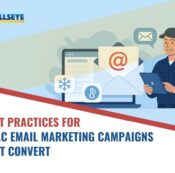
Maximize ROI – High-Converting PPC Strategies That Work for Home Automation Businesses!
The high-converting PPC strategies tailored for home automation businesses. Learn how to maximize ROI with smart targeting, optimized ad campaigns, and effective keyword use. Unlock the full potential of Home Automation PPC for better leads and more conversions.
Call Now For The Expert Digital Marketing Solutions: 561-277-0148
Introduction
Pay-per-click advertising has revolutionized how businesses connect with potential customers. For the smart home industry, Home Automation PPC is the secret weapon that can drive targeted traffic, generate high-quality leads, and deliver a measurable return on investment. Whether you’re promoting smart lighting, home security systems, or voice-controlled assistants, the right PPC strategy can elevate your brand and grow your business.
What Is Home Automation PPC and Why Does It Matter?
Defining Home Automation PPC in Simple Terms
Home Automation PPC refers to pay-per-click advertising campaigns specifically designed for businesses in the smart home technology industry. This includes ads for products and services like smart thermostats, automated lighting, home security systems, and IoT devices.
Why Paid Ads Matter in the Smart Home Industry
The smart home market is booming, but with growth comes competition. Paid ads allow you to bypass organic clutter and get your brand in front of high-intent customers. Smart Home Paid Ads help your business appear at the top of Google and social media platforms precisely when a user is searching for home automation solutions.
The ROI Potential of Smart Home Paid Ads
When executed properly, Home Automation PPC campaigns can generate a massive ROI. The key is targeting the right audience with the right message at the right time. By focusing on highly relevant keywords and optimizing your campaigns, you can see significant returns with measurable results.
Your Audience and Buyer Intent in Smart Home PPC
Mapping the Customer Journey in Home Automation
Every buyer goes through a journey—awareness, consideration, and decision. Identifying which stage your target audience is in helps you create tailored ad copy and offers. For instance, someone in the awareness stage might respond to a blog post, while someone in the decision phase needs a compelling call-to-action and offer.
Intent-Based Keywords and Their Impact on ROI
Using intent-based keywords like “buy smart thermostat online” or “best smart home system for security” improves ad performance. These high-conversion phrases attract users who are ready to buy, reducing wasted spend and increasing ROI.
Segmenting Campaigns for B2B vs B2C in Home Tech
Whether you sell to homeowners or integrators, your audience matters. PPC for Home Tech should be segmented to reflect different buyer personas. B2B clients often look for integration features and bulk pricing, while B2C customers are more concerned with ease of use and aesthetics.
Building a Solid PPC Foundation for Home Automation Brands
How to Set Goals That Align With Business Objectives
A strong PPC Strategy for Smart Homes starts with clear goals. Do you want to generate leads, increase brand awareness, or drive sales? Each objective requires different metrics and targeting strategies.
Budgeting Tips for Paid Advertising for Home Tech
Don’t throw money at ads and hope for the best. Start with a modest daily budget and scale as you identify what works. Allocate more to high-performing keywords and platforms that drive conversions.
Landing Page Optimization for Better Conversions
A great ad is only as good as the landing page it leads to. Ensure your pages load fast, are mobile-friendly, and contain a clear value proposition. Include testimonials, product videos, and strong calls to action.
Crafting Conversion-Focused Smart Home PPC Campaigns
Choosing the Right Platforms: Google Ads vs Social PPC
Home Tech Google Ads are ideal for high-intent search queries, while social platforms like Facebook and Instagram are excellent for visual storytelling and retargeting. A hybrid approach often yields the best results.
Ad Copywriting That Converts in the Home Tech Space
Speak your customer’s language. Use emotional triggers like safety, convenience, and energy savings. Headlines like “Protect Your Home With Smart Security in 5 Minutes” grab attention and drive clicks.
A/B Testing Techniques for Continuous Improvement
Test everything—headlines, descriptions, calls to action, and images. Use A/B testing to determine what resonates most with your audience. Regular testing can improve conversion rates and lower cost-per-click.
Keywords & Targeting: The Core of PPC Strategy for Smart Homes
Keyword Research for PPC for Home Tech
Effective keyword research is the cornerstone of successful Home Automation PPC. Use tools like Google Keyword Planner, SEMrush, and Ubersuggest to identify high-volume, low-competition keywords relevant to your products.
Competitor Keyword Tactics in Home Automation Ad Campaigns
Spying on your competitors can offer valuable insights. Tools like SpyFu allow you to see which keywords your competitors are bidding on and what their ad copy looks like. This can inform and sharpen your own strategy.
Geo-Targeting and Demographic Insights
Smart geo-targeting ensures your ads are seen by people who are most likely to buy. Focus on urban areas where smart home adoption is higher. Demographic filters like age, income, and household size help refine targeting even more.
Retargeting and Funnel Strategies for Maximum ROI
Smart Retargeting for High-ROI Smart Home Ads
Only 2% of users convert on the first visit. Retargeting reminds users of your product and nudges them to return and convert. Use dynamic ads that showcase products users viewed or added to their cart.
Building a Conversion Funnel for Home Automation PPC
From awareness to action, each stage needs its own campaign. Top-of-funnel ads could promote a blog or video. Mid-funnel might offer a demo or free guide. Bottom-funnel ads should feature irresistible offers.
How Retargeting Reduces CPA and Boosts Revenue
Retargeted users are 70% more likely to convert. This lowers your cost-per-acquisition and boosts ROI. Use frequency caps to avoid ad fatigue and segment retargeting based on user behavior.
Tracking, Analytics & Reporting: Data-Driven Decision Making
KPIs That Matter in Home Automation PPC
Focus on key performance indicators like click-through rate (CTR), cost per click (CPC), conversion rate, and return on ad spend (ROAS). These metrics help determine what’s working and what needs tweaking.
Using Google Analytics and Tag Manager for PPC
Integrate your Home Automation Ad Campaigns with Google Analytics and Tag Manager to track user behavior. Monitor session duration, bounce rates, and conversion paths for valuable insights.
Attribution Models: Which One Works for Home Tech?
Use multi-touch attribution models to understand which touchpoints drive conversions. First-click and last-click models are simple but often misleading. A linear or time-decay model provides a more accurate picture.
Avoiding Common Mistakes in Effective PPC for Home Automation
Keyword Misalignment & Budget Drain
Avoid broad keywords that attract the wrong audience. Use exact and phrase match types to improve relevance and reduce wasted spend.
Poor Landing Page Experience
A mismatch between your ad and landing page can kill conversions. Make sure the landing page reflects the ad’s promise and has a seamless user experience.
Ignoring Mobile Optimization
More than 60% of searches come from mobile devices. Ensure your ads and landing pages are mobile-optimized to capture this growing segment.
Real-World Examples: Successful Home Automation Ad Campaigns
Boosting Conversions with Smart Ad Copy
A smart lock company increased conversions by 40% by changing its headline from “Smart Locks for Sale” to “Never Get Locked Out Again – Install in 10 Minutes!”
Cutting CPC in Half Using Location Targeting
A home automation integrator reduced its CPC by 50% by targeting only affluent ZIP codes with high smart home adoption rates.
Maximizing Leads Through Automation and AI
An AI-powered thermostat brand used machine learning to automate bid adjustments based on time of day and user behavior, doubling their ROAS.
Future Trends in Home Automation PPC and Paid Ads
AI-Powered Ad Tools for Smart Home Companies
AI tools like Performance Max and Smart Bidding in Google Ads are reshaping how we manage Paid Advertising for Home Tech. These tools optimize bidding, placements, and targeting in real-time.
Voice Search and PPC for Home Tech
As voice-activated devices become more common, voice search queries like “best smart lights near me” will influence PPC strategy. Incorporate natural language and question-based keywords.
The Role of Privacy and First-Party Data in Smart Home Paid Ads
With third-party cookies phasing out, gathering first-party data through forms, email signups, and engagement becomes crucial. Build trust and transparency into your data collection.
Final Thoughts
Implementing the right PPC strategies can significantly boost your home automation business’s visibility, leads, and ROI. By focusing on buyer intent, leveraging targeted keywords, and crafting conversion-driven ads, you set the stage for sustainable growth. Don’t underestimate the power of retargeting and continuous performance tracking—it’s the key to long-term success. Avoid common pitfalls and keep optimizing your campaigns based on real data. As smart home technology evolves, so should your advertising approach. With the right strategy, Home Automation PPC can deliver impressive results. Start refining your campaigns today to stay ahead in this competitive market.
FAQs About Home Automation PPC
How much should I spend on Home Automation PPC?
Start with a test budget of $500-$1,000/month and scale based on performance. ROI-driven decisions are key.
How soon can I expect results from smart home paid ads?
Initial data comes in within days, but meaningful trends and ROI typically appear within 30-90 days.
Are Google Ads better than Facebook Ads for Home Tech?
Google Ads capture high-intent searches, while Facebook excels at awareness and retargeting. A combined strategy works best.
What makes a PPC campaign high-converting in this niche?
Relevant keywords, compelling copy, optimized landing pages, and precise targeting.
Can PPC really help me dominate the smart home market?
Absolutely. With the right strategy, you can outshine competitors and become the go-to brand in your niche.




